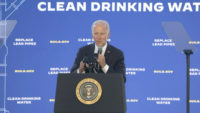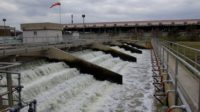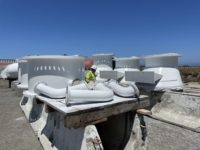Ventura, Calif., is moving forward with its VenturaWaterPure plan to increase the resilience of the city’s water supply against drought, thanks to a pair of Water Infrastructure Finance and Innovation Act loans totaling $173 million, announced May 23 by the U.S. Environmental Protection Agency. The WIFIA loans will fund several projects, including an advanced water purification plant.
The plant would produce up to 5,400 acre-ft of potable water per year, according to EPA. That translates to about a fifth of the city’s water, by 2035.
“Adapting to California’s hotter, drier climate requires investing in local efforts to create water supplies that can withstand drought and other extreme conditions,” California Water Boards Chair E. Joaquin Esquivel said in a statement. “By managing water more holistically and connecting the drops across our watersheds, solutions like Ventura’s advanced purification plant help ensure that people have access to clean water for the long-term.”
Ventura, with a population of about 110,000 in southern California, sources its drinking water from Lake Casitas, the Ventura River and groundwater basins, but has faced a shrinking supply in recent years because of low rainfall and other issues.
Currently, the city discharges treated wastewater into the Santa Clara River estuary. In addition to the purification plant, VenturaWaterPure calls for some of the treated wastewater to be recovered, treated further and then injected into groundwater basins, where it can be drawn back into the water supply again.
To implement the plan, city officials say they need to upgrade an existing water reclamation facility with new treatment systems, additional groundwater injection and extraction wells and an ocean outfall and discharge pipeline. They also need to build the advanced water purification facility.
Diverting flows away from the estuary is also expected to benefit the habitats of sensitive species, EPA says.
Phased construction is scheduled to take between three and five years, with a tentative start date next year, city records show. Construction and operation of the public works are expected to involve about 1,100 jobs, according to EPA.
The low-cost loans will save the city about $53 million. “The upgrades made possible by EPA’s $173 million WIFIA loans will help the city increase its water supply by an incredible 20% and strengthen the area’s economic vitality,” Radhika Fox, EPA's assistant administrator for water, said in a statement.
Since the WIFIA program was established by the Water Infrastructure Finance and Innovation Act of 2014, EPA says it has invested $38 billion in water infrastructure.





